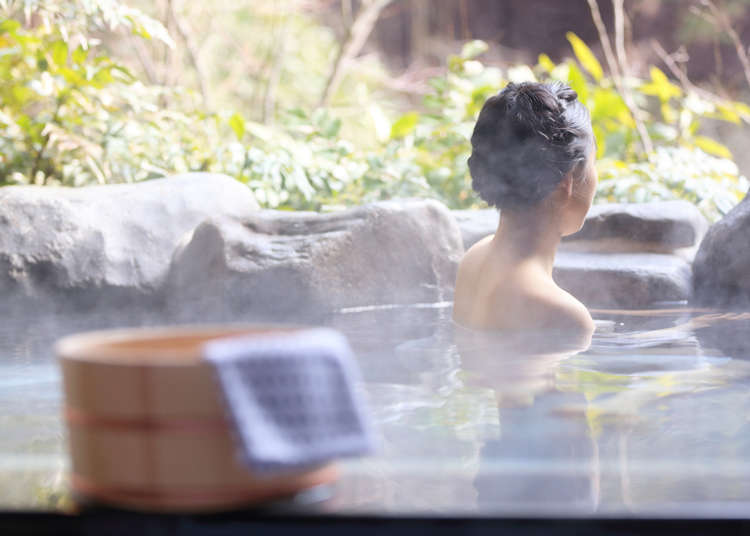
One of Japan’s cultural staples is hot springs (onsen) and public baths. While it’s common for Japanese people, they raise many questions among foreign visitors.
We asked Dr. Yasuaki Goto, a specialist in baths and a researcher with the Japan Health Development Foundation, to answer some questions that foreigners have when it comes to Japanese hot springs and public baths.
Lots of interesting content follows; some things would surprise even Japanese people!
- Table of Contents
-
- 1. What is the correct order of things to do before entering the bath? Should you shower after hot springs?
- 2. Do Japanese people really drink sake while bathing?
- 3. Why do many people drink milk after onsen baths?
- 4. Where does the Japanese hot spring and public bath culture come from? Why are there so many hot springs in Japan?
- 5. What is the difference between a hot spring (onsen) and a public bath (sento)?
- 6. Is hot-spring water really beneficial? Is it different from normal water? Is it good for your skin?
- 7. Why is there a cold water bath next to the hot spring?
- 8. Can I put a towel on my head? (What should I do if I drop the towel in the water?)
- 9. What should I do if I need to pass wind? Can I go to the bathroom and come back?
- 10. There are some hot springs that seem to be using radon. Is that safe?
- 11. Are Japanese onsen only sulfur based?
- 12. It’s a little embarrassing to hop in the hot spring. Is there a time when there aren’t people?
- 13. What is the most expensive onsen in Japan?
- 14. Do you not scrub yourself at the hot springs?
- 15. Is it ok even if I have a lot of body hair? What about tattoos?
- Other topics foreigners ask a lot about:
1. What is the correct order of things to do before entering the bath? Should you shower after hot springs?
――Theoretically, any order is fine, but to keep the bath clean, etiquette dictates to wash oneself before entering the bath itself. To get your body accustomed to the heat, you should first take a shower. Washing your body after a bath makes cleaning yourself easier, so the most straightforward might be to “rinse yourself → bathe → wash yourself.”
2. Do Japanese people really drink sake while bathing?
――You may have an idea of hot springs and sake, but when considering health, it is not recommended to drink while bathing or before bathing.
However, some facilities sell alcoholic beverages like beer or Japanese wine in the bath, like the Noboribetsu Onsen's Daiichi Takimotokan. There are also places where you can enjoy sake while having a foot bath in places like Shiobara Onsen's Kounso or the Oita Onsen in Beppu Hachiyu, which have become bars. Drinking alcohol while enjoying a foot bath is safe.

3. Why do many people drink milk after onsen baths?
――There are various theories, but there is no one exact reason.
One of the most prominent theories is that after the war, when refrigerators were not widely used in ordinary households, public baths worked with the milk producers, because they used refrigerators to provide cold drinks.
It’s important to drink water after taking a bath because you dehydrate through sweat. At baths, you can now also find a lot of sport drinks and supplement drinks.
4. Where does the Japanese hot spring and public bath culture come from? Why are there so many hot springs in Japan?
――There are several theories about this topic as well. Japan is a volcanic country with more than 100 active volcanoes.
Natural hot springs here are the largest in the world, so the mere presence of so many hot springs, is considered to be a significant factor in the rise of the hot spring culture.
I think that the richness of the water, when it comes to minerals, is also a factor. When it comes to public baths, bathing areas have been introduced in ordinary households, but before it was commonplace (nowadays 95% of households have a bathing area), people could enjoy a soak only in public facilities. Regardless, it is still lovely to enjoy a large open bath, don't you think?
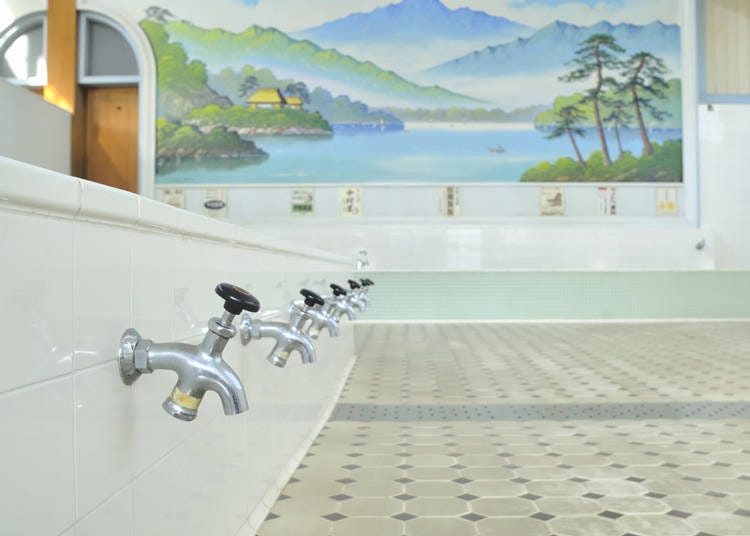
5. What is the difference between a hot spring (onsen) and a public bath (sento)?
――According to the Japanese definition, a hot spring is “at least 25℃, and contains a certain amount of specific components.” Meanwhile, public baths are public bathing facilities that do not need to be natural hot springs.
In Tokyo, there are many hot spring baths in the Ota Ward. A public bath usually costs a fixed amount depending on the prefecture (470 yen for adults in Tokyo). In addition to bathing, there is also the benefit of a small rest area and facilities that sell drinks (often used by residents).
The price of the so-called “super public baths” (or “super-sento”) is higher than that of the standard public baths, and they offer multi-functional bathtubs, dining and restaurant spaces, plus massages/beauty spas, depending on the facilities. Groups of friends or families usually use these for a relaxing leisure period.
6. Is hot-spring water really beneficial? Is it different from normal water? Is it good for your skin?
――There are ten types of medical treatment springs in Japan. A 'medical treatment spring' is a hot spring that can help you treat certain conditions.
For example, there are ones that act on the skin or which coat the skin (chloride springs, sulfate springs, etc.); there are ones that cleanse and remove impurities (alkaline hot springs) or improve blood flow and deliver oxygen and beneficial substances to the skin (carbon dioxide springs).
This is what makes natural hot spring water different from regular hot water.

Acidic and sulfur springs are characterized by intense bactericidal action. This can irritate, so if you have sensitive skin, be sure to wash it after your bath. Furthermore, do not drink the hot spring water. Even those springs that say the bath water is safe to drink should be used in moderation.
7. Why is there a cold water bath next to the hot spring?
――I think many people like to use cold water to cool off when using the sauna. Although there is no decisive evidence on the benefit of alternatively using hot and cold water, there are theories that such a process might help relax and recover after fatigue and exercise. However, avoid jumping into water that is too cold, as it could shock your heart.
8. Can I put a towel on my head? (What should I do if I drop the towel in the water?)
――You can put a towel on your head while bathing. If it falls in the water, take it out as quickly as possible. Putting towels soaked in cold water can help prevent heat-related issues. Just make sure to squeeze the towel outside of the bathtub.
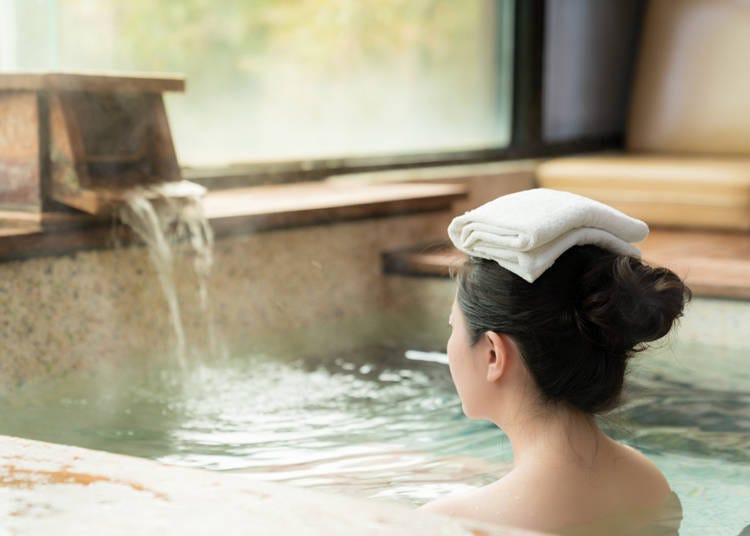
9. What should I do if I need to pass wind? Can I go to the bathroom and come back?
――You don’t have to be too worried about gas. However, please, be careful that it doesn’t turn into something more solid. Children, for example, could suddenly need to relieve themselves. Surely you can go to the bathroom and come back, but before re-entering the bathtub, make sure to wash up again.
10. There are some hot springs that seem to be using radon. Is that safe?
――Although it is present in some hot springs, radon's radiation levels are neglectable, and it has been proven that it does not adversely affect the body at the concentrations found at Japanese onsen. Some examples are Misasa Onsen in Tottori Prefecture and Yunoyama Onsen in Mie Prefecture.
11. Are Japanese onsen only sulfur based?
――No. there are 10 types of hot springs. The most common are chloride springs and simple hot springs.
12. It’s a little embarrassing to hop in the hot spring. Is there a time when there aren’t people?
――If you use the bath early in the morning or late at night, they are more likely to be fewer occupants. But be careful because the floor may be slippery, depending on the quality of the facilities. Some ryokan and hotels have mixed baths where people wear bathing suits. Others have private baths that can be accessed only by family or friends. So don't worry so much if you are a bit shy; ask the facility if they have a private bath and enjoy!
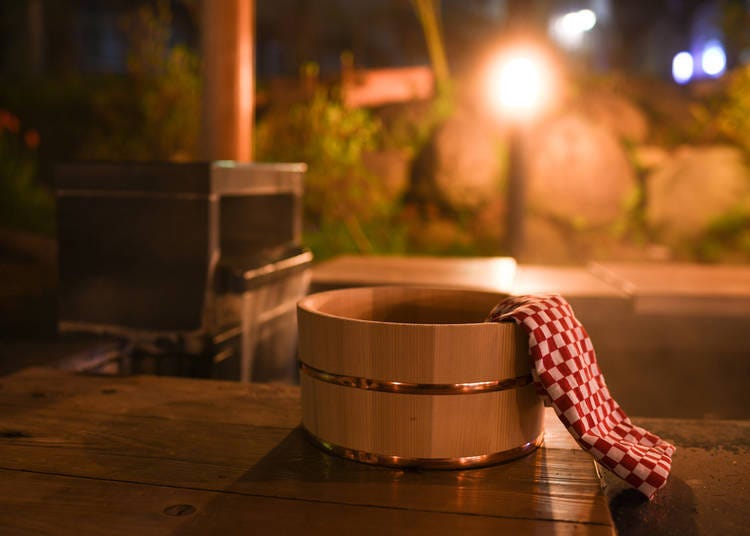
13. What is the most expensive onsen in Japan?
――I don’t know for sure, but “Tenku no Mori” in Myoken Onsen, Kagoshima Prefecture, sports several villas on a scenic mountainside. It’s 300,000 yen to 500,000 yen per night for two people. Or if you want to reserve the whole facility, it’ll set you back around 5 million yen. The Windsor suite at Lake Toya Windsor is, for two people (including breakfast), around 800,000 yen. I think there are many other expensive places in luxury hotels and resorts in Japan (laughs).
14. Do you not scrub yourself at the hot springs?
――In the bathtub, it’s important to avoid filth. In some places, you can’t even use shampoo or soap. Make sure before you go anywhere. Some facilities offer scouring services in private rooms.
15. Is it ok even if I have a lot of body hair? What about tattoos?
――Body hair is fine. On the other hand, many facilities will deny access to people even with small tattoos.
However, there are also hot springs that allow you to use the bathing area, as long as you wear stickers that cover the tattoos, adhesive bandages, or similar things.
It would be a shame if you couldn’t use the bath upon visiting a business, so make sure they are ok with tattoos beforehand. Ryokan room baths and private baths can be used without problems.
Other topics foreigners ask a lot about:
What hot springs are the ones with animal legends?
――Deer (Kagoyu Onsen in Nagano Prefecture), Egret (Dogo Onsen in Aichi Prefecture; Yamanaka Onsen in Ishikawa Prefecture; Gero Onsen in Gifu Prefecture), White Fox (Yuda Onsen in Yamaguchi Prefecture), Monkey (Yuyama Onsen in Yamaguchi Prefecture)
What phrases are helpful in the bath?
――“Gokuraku, Gokuraku” (lit. “enjoy the bliss”) and “tengoku no youda” ("just like heaven") might be representative, although it might make Japanese people around you giggle, if you sing these phrases out loud.
Why do Japanese people use hot water at around 40℃?
――The most important factor in Japanese baths is the thermal effect. When the body temperatures rises in hot water and blood flow improves, carbon dioxide is washed away and oxygen gets delivered to the whole body faster, making you feel refreshed. I think that doing this every day is one of the reasons that have led to the longevity of Japanese people (Mr. Goto).
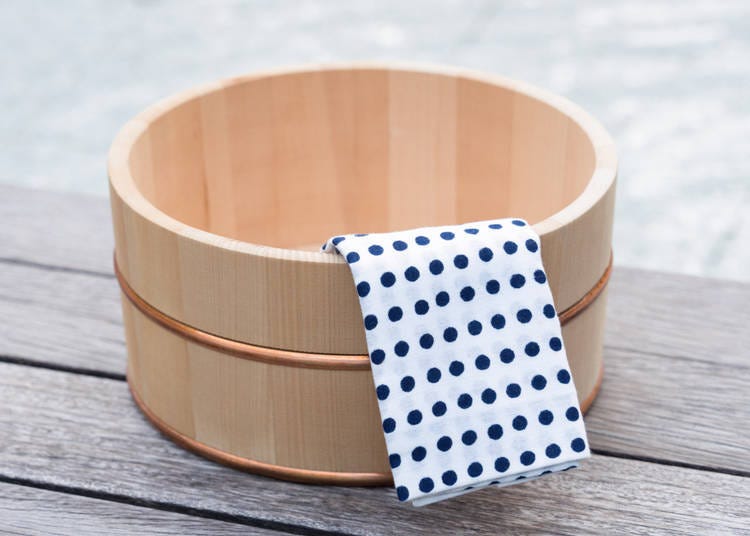
How did you feel about hot springs and public baths? Lastly, when I asked Goto-sensei for advice on how to take a bath, he said, “It depends on the purpose of the bath. If you want to relax, take a nice hot bath.“
Although there are basic rules to follow, each person can enjoy the bath in their way. There are many hot springs and public baths in Japan, so please enjoy them accordingly to what you try to get out of them.
Person who we interviewed:
Dr. Yasuaki Goto, Frofessor (Professional “FURO” scientist), Japan Health & Research Institute
*Prices and options mentioned are subject to change.
*Unless stated otherwise, all prices include tax.
Popular Tours & Activitiess
Recommended places for you
-

Kambei Sannomiyahonten
Yakiniku
Kobe, Sannomiya, Kitano
-
Appealing

Rukku and Uohei
Izakaya
Sapporo / Chitose
-

KYOTO TAKENOSATO ONSEN MANYO NO YU
Hot Springs (Onsen) & Bath Houses (Sento)
Kyoto Station, To-ji Temple
-

ISHIDAYA Hanare
Yakiniku
Kobe, Sannomiya, Kitano
-

Kanzenkoshitsuyakinikutabehodai Gyugyu Paradise Sannomiya
Yakiniku
Kobe, Sannomiya, Kitano
-
Goods

Yoshida Gennojo-Roho Kyoto Buddhist Altars
Gift Shops
Nijo Castle, Kyoto Imperial Palace
-
Ad

(Opening in Jan 2026) 'THE SUMO LIVE RESTAURANT HIRAKUZA GINZA TOKYO!' 5 Exciting Ways to Experience the World of Sumo!
-
Ad

Complete Guide to Ueno's National Museum of Nature and Science, the Perfect Place to Visit on Rainy Days or With Children
-

New in Ginza! Air BicCamera Ginza Opens with a Faster, More Convenient Shopping Experience
by: Guest Contributor
-

Jujutsu Kaisen Takes Over JR East With a Wrapped Shinkansen This Winter
by: Guest Contributor
-
Ad

Discover the "Miraculous Forest" in the Heart of Tokyo: The Institute for Nature Study (9 Minutes from JR Meguro Station)
-
Ad

[Tokyo, Ueno] A Journey to the Sacred Grounds of the Tokugawa Shoguns: A Complete Guide to the "EDO SHOGUN’S LEGACY TRAIL TOUR" – Where Special Access, Modern Art, and Digital Innovation Converge
by: Guest Contributor
-

Ginzan Onsen: 15 Things to Do & Where to Stay in One of Japan's Most Beautiful Hot Springs Towns
by: Guest Contributor
-

Tokyo Spas: Three Hidden Hot Spring Gems of Tokyo and Yokohama
-

Do's & Don'ts: 9 Weird Things Tourists Often Forget at Onsen in Hokkaido
-

Plan Your Visit to Zao Onsen (Yamagata) - A Comprehensive Guide
-

Kamaishi Japan: Kamaishi Unosumai Recovery Stadium and Sightseeing Spots in Japan’s Rugby Town
-

10 Must-Visit Places for Autumn Leaves in Tohoku: Naruko Gorge, Geibikei Gorge & More (2025)
by: Guest Contributor
- #best sushi japan
- #what to do in odaiba
- #what to bring to japan
- #new years in tokyo
- #best ramen japan
- #what to buy in ameyoko
- #japanese nail trends
- #things to do japan
- #onsen tattoo friendly tokyo
- #daiso
- #best coffee japan
- #best japanese soft drinks
- #best yakiniku japan
- #japanese fashion culture
- #japanese convenience store snacks












